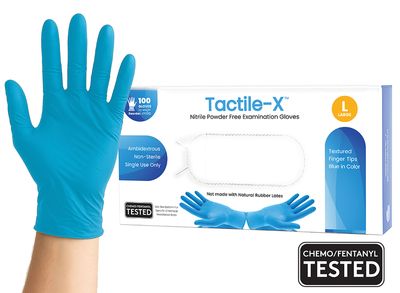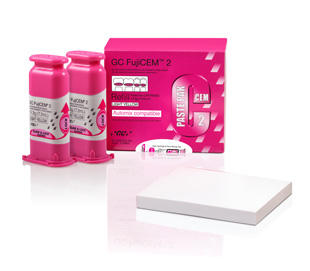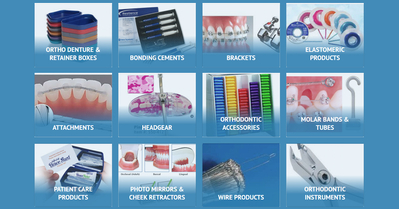How Gingival Retraction Drives Restorative Excellence
November 19 2020
3 key components to ideal impressions or scans
Producing an exceptional restoration for a damaged tooth involves a series of complex, inter-related steps. When a set of restorations are completed together, such as for a smile makeover or full mouth rehabilitation, each step’s importance increases. One mismanaged piece can turn a masterpiece into a disaster. From planning to the final polish, the delivery of excellence rests on crucial principles.
The management of the soft tissues during procedures often gets overlooked, but it plays a significant role in the final outcome of a carefully orchestrated case. Many dental materials include a resin-based component, including adhesives, composites, and cements. Therefore, it’s essential to keep the area free of blood and saliva contamination. Acid-etching, placement of matrix bands for facial composites or core buildups, or extension of crown margins below the gingival level can cause bleeding.
Crown and bridge techniques demand precise, clean models for final restorations with sealed margins. When blood, crevicular fluid, saliva, or tissue overlays any part of the margin, the area becomes a weak link in the case. One study showed that 89% of impressions submitted to labs for custom restorations contained errors that could impact the fit of the final restoration. Many of these problems begin and end with incomplete management of the gingival tissue.
Whether records involve traditional physical impressions or digital scans, a dry, clear field helps ensure a beautiful, long-lasting restoration with a low failure rate.
The Two-Cord Technique
A two-cord impression technique is a tried-and-true method for capturing quality master impressions or scans for full-coverage and partial-coverage restorations. In this case, a small-diameter cord is tucked into the base of the sulcus, and a larger diameter cord is gently pressed along the level of the restorative margin. The master impression needs to duplicate the entire margin and about 0.5 mm of the tooth surface apical to the margin. Retraction aims to create a micro-space for light-bodied impression material or precise optical scanning.
A single cord may also be adequate to retract gingival-level margins in healthy tissue. This method can also be useful when placing Class V restorations or deep Class II composites.
Alternative Solutions
Braided retraction cord is a proven technique in restorative dentistry. When the right materials are placed with careful handling, it works exceptionally well. However, other methods and materials offer alternatives to consider in different clinical situations. Compression caps, syringe gels, and kaolin clay all deserve a place in a well-designed clinical protocol.
Regardless of the technique you choose, consider the critical components of gingival retraction and fluid management. Mix-and-match to create a solution for every situation:
Stop The Bleeding:
Any amount of moisture can cause a poor impression or a distorted scan. Here are three products to consider when you’re looking for ways to keep a dry gingival sulcus:
FS Hemostatic: This 15.5% ferric sulfate liquid helps stop challenging bleeding cases and doesn’t contain any epinephrine. One drop on a cotton pellet, retraction cord, or syringe dispenser creates an efficient solution.
GingiAid 25% Aluminum Chloride A buffered aluminum chloride solution, GingiAid offers another epinephrine-free method to control moisture. This product comes in two convenient sizes for economical choices.
Racegel Hemostatic Gel This kit features the benefits of aluminum chloride in a convenient, syringe-based gel that sits right where you place it. Disposable brushes help controlled placement with a gentle scrubbing action for maximum effectiveness.
Retract and Hold
Retraction cord remains a staple of good tissue management, but it’s not the only option. Retraction pastes also provide a viable alternative and work well in some cases.
Gingi-Pak® Z-Twist Weave Braided Cord offers dependable handling characteristics. It’s easy to place and stays where it belongs with minimal effort. Clinicians can choose between plain cord or versions hand-impregnated with dl epinephrine HCL or aluminum sulfate to deliver a consistent 0.5 mg of solution per linear inch of cord.
AccessFLO is a low-viscosity, flowable gingival retraction paste. It contains the active ingredients kaolin clay and aluminum chloride to help control bleeding and prevent seepage. Prefilled unit-dose tubes allow easier placement of material in the gingival margin region. It rinses away quickly and offers an atraumatic approach to tissue management.
Racelett Hemostatic Pellets These Individual 100% cotton pellets come in two sizes and epinephrine concentrations: Size #2 with 1.15 mg racemic epinephrine HCl per pellet and size #3 with 0.55 mg racemic epinephrine HCl per pellet. Dip in water to activate, place where it’s needed, and keep procedures moving.
Handle The Process
Regardless of the materials used, the instrumentation starts in the clinician’s hands. The right tools help make the process flow smoothly. Here are must-have components to have within arm’s reach:
PT-55 Cord Packer All cord packing instruments aren’t created equal. Eliminating hand fatigue can prove career-sustaining, and the PT-55 helps. The silicone grip produces a tactile feel and more comfortable handling than an all-metal body. Yet, it withstands autoclaving, chemiclaving, cold sterilizing, and ultrasonic cleaning for years.
Nordent #N222 Cord Packer If you’re looking for a classic original straight-blade design, this instrument belongs in your cassette. These unique cord packers feature 12 mm blades that easily maneuver around any tooth. The tips are thin enough to access the tightest sulcus, and you can order them in plain or serrated tips.
ROEKO Comprecap compression caps stop bleeding naturally by compression of the tissue. The anatomical form includes semicircle-shaped spaces on two opposite sides that can easily be placed on adjacent teeth. Compression caps can be used with or without hemostatic gels or liquids.
Design Your Strategy With More Options Than Ever.
Exceptional restorative dentistry that protects the integrity of the gingiva revolves around key components, including tissue management. In some cases, epinephrine may be the right choice. In other cases, it should be avoided. Thin tissue may be damaged by the two-cord technique and benefit from lanolin clay retraction. Regardless, keeping the right supplies in your operatory reduces stress and delivers excellence.
Recent posts

07-18-2025
Textured vs. Smooth Nitrile Gloves

02-12-2025
Ultrasonic scalers

10-17-2024
High Definition Black Line Mirrors

09-27-2020



